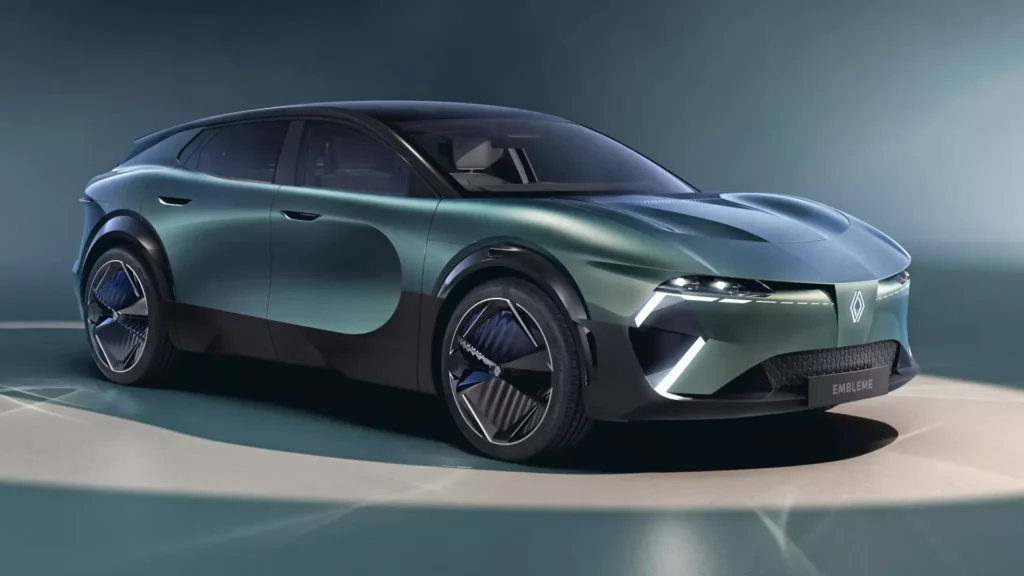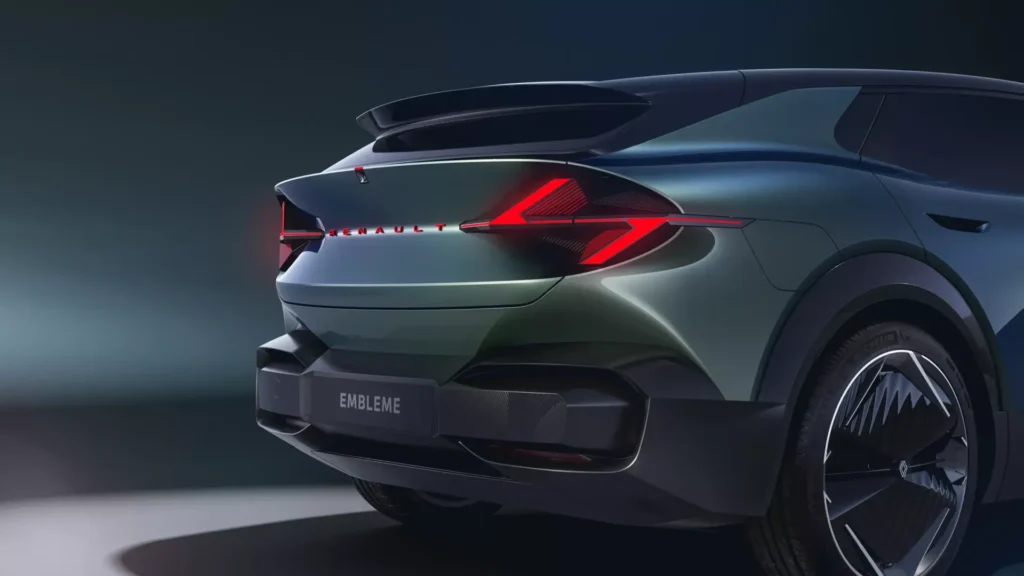Renault prepares for a revolutionary design shift: The end of classic SUVs?
Renault is planning a bold transformation in its vehicle design and lineup. By 2028, the automaker aims to move away from traditional SUV shapes, favoring sportier and more elegant lines. This shift, inspired by the Embleme concept, introduces a new generation of electric vehicles designed to be both practical and appealing to modern customers.

A comeback for station wagons?
Renault’s chief designer, Gilles Vidal, hints at a potential revival of station wagons. These vehicles, which once declined in popularity due to the rise of crossovers and SUVs, offer an ideal combination of low-slung silhouettes and ample storage space. This is especially advantageous for electric vehicles, where reduced air resistance plays a critical role in maximizing range. According to Vidal, sporty station wagons could deliver both practicality and stylish elegance.

“People still need large cars, but it’s up to us to offer them new concepts that meet today’s needs. Station wagons can be both sexy and practical,” Vidal said.

Challenging SUVs: is the criticism fair?
SUVs often face criticism for their size, weight, and higher emissions. In cities like Paris, where larger vehicles are penalized with higher parking fees, SUVs have become symbols of excess. However, Vidal points out that MPVs, which share similar parameters, aren’t judged as harshly. “SUVs and MPVs have the same engines, weight, and emissions. Who are we to judge cars by their shape?” he added.

A new design language
The Embleme concept represents the future of Renault’s design. This low-slung crossover with sleek lines signals a departure from the retro-inspired designs of models like the Renault 5, 4, and Twingo. While these retro models will remain part of the lineup with minor updates, Renault’s new design language will focus on simplicity and functionality.
“Embleme is the first glimpse of our new global design strategy. It will introduce generous yet simple shapes that reflect the needs of today’s society,” Vidal explained.

The future of interiors
Renault is also planning an interior revolution. The goal is to simplify user interaction and deliver truly intuitive controls. “We want to create interiors so straightforward and user-friendly that customers will say, ‘This is exactly what I need,’” Vidal noted. The concept hints at a cabin design focused on sustainability and functionality.

Conclusion: Renault’s vision for the future
Renault is preparing for a radical redesign of its vehicles. Moving away from traditional SUVs, the automaker is heading towards innovative shapes that blend practicality with eye-catching aesthetics. Station wagons, low-slung crossovers, and revolutionary interiors will play key roles in this transformation. The question remains: how will the market respond to these changes, and will customers embrace Renault’s bold new direction?
Source: autocar


















Leave a Reply